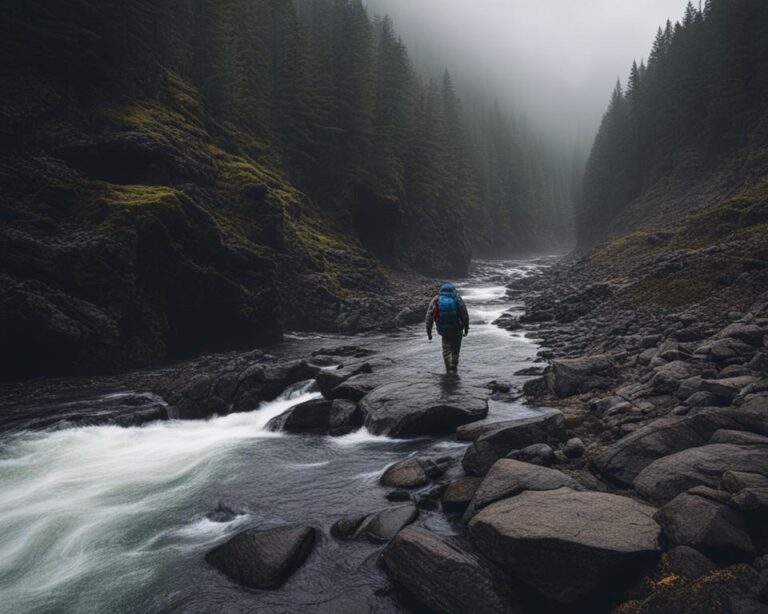Navigating the Wild: Advanced Orienteering Skills for Preppers
In today’s world, where technology is prevalent, mastering wilderness orienteering skills is more important than ever. Whether you’re an avid adventurer, a seasoned outdoor enthusiast, or a prepper preparing for the unexpected, having the ability to navigate in the wilderness is a crucial survival skill. In this article, we will explore essential wilderness navigation techniques that can help you confidently navigate and orienteer in the wild.
Did you know that over 90% of search and rescue missions in national parks are a result of people getting lost? Don’t become a statistic. By recognizing natural features and landmarks, utilizing celestial navigation, and mastering orienteering, you can significantly increase your chances of safely navigating through even the most challenging terrains.
Throughout this article, we will delve into the importance of survival pathfinding in the wild, the art of map reading and compass navigation, utilizing natural indicators for land navigation, and essential techniques such as dead reckoning and pace counting. We will also explore the role of GPS devices and navigation apps in wilderness navigation, the skills involved in orienteering and wayfinding, and the statistical insights that highlight the growing interest in wilderness exploration.
Whether you’re planning a hiking trip, embarking on a solo adventure, or simply want to enhance your wilderness survival skills, join us as we unlock the secrets of mastering wilderness orienteering skills. Let’s ensure that when we step into the wild, we do so with confidence, preparedness, and the ability to navigate our way through any challenge that comes our way.
The Importance of Survival Pathfinding in the Wild
Survival pathfinding is crucial for adventurers, outdoor enthusiasts, and wilderness experts. In the age of advanced technology, it’s easy to rely solely on GPS devices and navigation apps for outdoor navigation skills. However, in extreme situations, such technology can fail or run out of battery, leaving us stranded and lost in the vast wilderness.
That’s why mastering traditional survival pathfinding techniques is essential. From wilderness map reading to compass navigation techniques, these fundamental skills ensure that we can navigate confidently and safely through the great outdoors.
“The best journeys in life are those that are taken with the knowledge of how to find our way back home.” – Unknown
When it comes to outdoor navigation skills, reading and interpreting maps is a vital skillset. Maps provide valuable information about the terrain, water sources, and landmarks, allowing us to plan our routes effectively. By understanding symbols and contour lines, we can visualize the landscape and navigate with precision.
In addition to map reading, compass navigation techniques are another crucial component of survival pathfinding. A compass provides a reliable means of determining directions and establishing a course of travel. By combining map reading skills with compass navigation, we can confidently navigate unfamiliar terrain and avoid getting lost.
But why is it so important to develop these wilderness navigation skills? The answer lies in the unpredictability of nature and the potential risks associated with outdoor exploration. Technology can fail, batteries can die, and signals can be lost. When we find ourselves in remote areas without the convenience of GPS, our survival depends on our ability to rely on our outdoor navigation skills.
By honing our wilderness map reading and compass navigation techniques, we become self-reliant and adaptable to any situation. We cultivate a deep understanding of the environment, recognizing natural features and landmarks that can guide us to safety. We gain the confidence to explore uncharted territories, knowing that we possess the skills to navigate our way back home.
So, let’s embrace the importance of survival pathfinding in the wild. Let’s equip ourselves with the knowledge and skills necessary to navigate the great outdoors with confidence and resilience.
Key Takeaways:
- Survival pathfinding is crucial for adventurers, outdoor enthusiasts, and wilderness experts.
- Mastering wilderness map reading and compass navigation techniques enhances our outdoor navigation skills and ensures our safety.
- Technology can fail in extreme situations, making traditional survival pathfinding skills indispensable.
- By relying on map reading and compass navigation, we can confidently navigate the wilderness with precision and self-reliance.
- Developing these skills cultivates a deep understanding of the environment and empowers us to explore uncharted territories.
Map Reading and Compass Navigation
When it comes to wilderness survival skills, there are few more important than map reading and compass navigation. These fundamental skills are essential for successful survival pathfinding, whether you’re embarking on a wilderness hiking adventure or navigating through unknown terrain.
Maps are invaluable tools that provide a wealth of information about the wilderness. They not only show the lay of the land, but also highlight important landmarks, such as rivers, mountains, and trails. By understanding how to interpret contour lines, symbols, and scale, you can gain a deeper understanding of the terrain and navigate more effectively.
Compass navigation is equally vital for wilderness navigation. A compass helps determine your direction, allowing you to plot a course towards your destination. By combining your compass with map reading skills, you can navigate with confidence, ensuring you stay on track during your outdoor adventures.
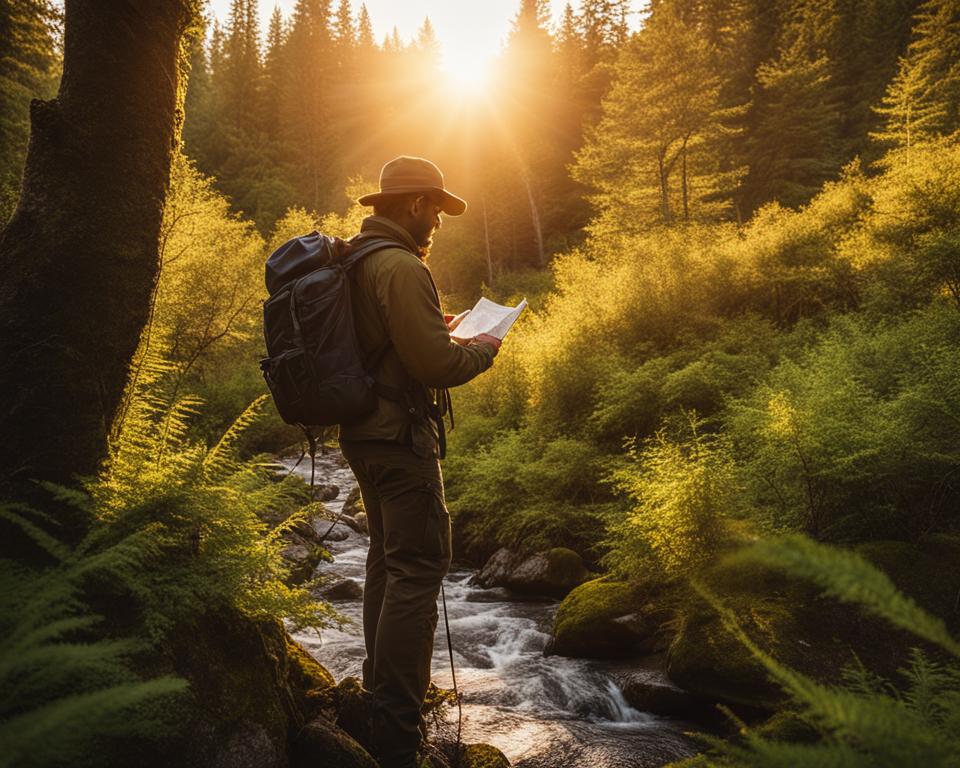
Whether you’re exploring the wilderness for recreation or finding yourself in a survival situation, having a strong grasp of map reading and compass navigation is essential. These skills form the foundation for successful wilderness hiking and navigation, enabling you to confidently traverse even the most challenging landscapes.
Land Navigation Using Natural Indicators
When you find yourself navigating the wilderness without a map and compass, don’t fret! The natural world around us holds valuable clues to guide us on our path. By paying attention to these natural indicators, we can orient ourselves and successfully navigate the wilderness.
One useful indicator is the position of the sun. By observing the sun’s location in the sky, we can determine the cardinal directions. In the Northern Hemisphere, the sun rises in the east and sets in the west. This knowledge can help us establish our bearings and choose the right direction to go.
Another natural indicator is the growth of moss on trees. Moss tends to grow on the north side of trees as it thrives in damp, shaded areas. By locating moss-covered trees, we can gain a sense of orientation, ensuring we don’t end up going in circles. Keep in mind that this technique may not be foolproof in all regions, but it can provide a valuable hint when other methods aren’t available.
Studying wildlife behavior is another effective way to find our way in the wilderness. Animals, like birds and mammals, have their own natural instincts for survival. They often migrate towards water sources or frequent specific areas for food. By observing their movements, we can discover potential water sources or even human settlements, leading us to safety.
Understanding these natural cues is essential for successful wilderness navigation. They serve as our compass when maps and technology are not at our disposal. By embracing these orienteering essentials in the wilderness, we can confidently explore the wild and find our way home.
Dead Reckoning and Pace Counting
In the wilderness, when there are no landmarks or clear paths to follow, orienteering becomes essential. Dead reckoning and pace counting are two valuable techniques that can help you estimate distances traveled and navigate off the beaten path. These techniques are particularly useful when traditional navigational aids like maps and compasses are not available or reliable.
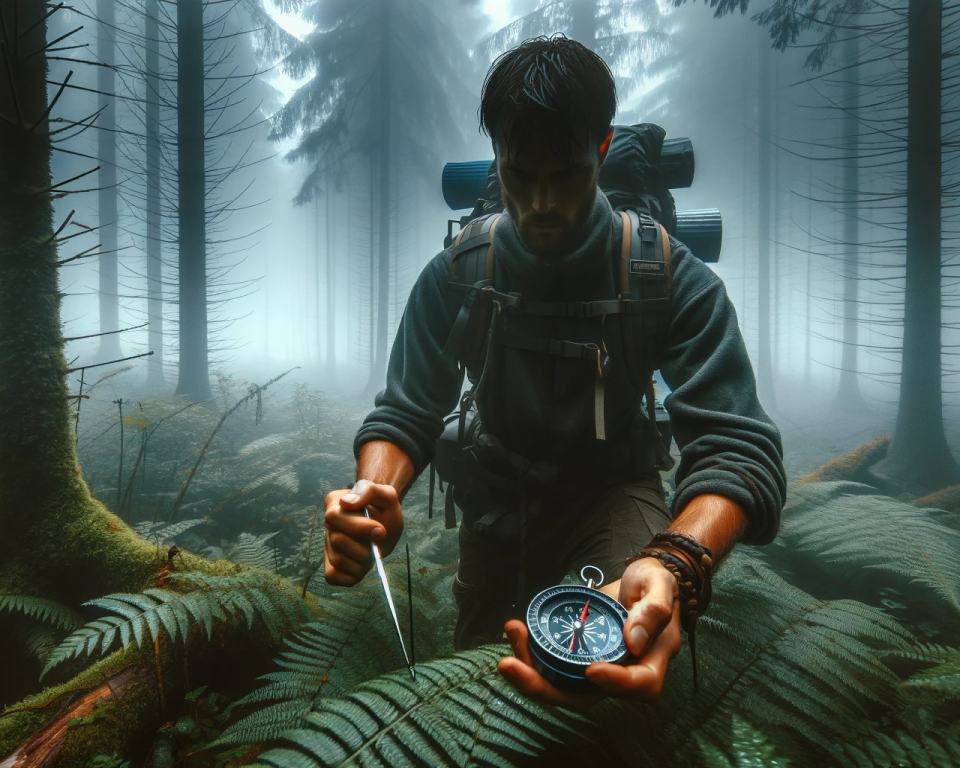
Dead Reckoning
Dead reckoning involves keeping track of time, direction, and speed to calculate your approximate location. By knowing how long you have been traveling, the direction you have taken, and your estimated speed, you can estimate your current position. This technique requires you to maintain a detailed log of your movements and make adjustments for factors like wind, terrain, and physical effort.
“Dead reckoning provides a methodical approach to orienteering in the wilderness, allowing us to navigate even when the traditional tools are not available or reliable.”
Pace Counting
Pace counting is another valuable technique used in wilderness navigation. It involves determining the average number of steps it takes you to cover a certain distance. By counting the number of steps you take, you can estimate how far you have traveled. This technique requires practice and calibration based on the individual’s stride length and terrain conditions.
Using dead reckoning and pace counting together can significantly enhance your ability to navigate through uncharted territory. By continuously updating your estimated position based on the distance traveled and your known starting point, you can chart a course and track your progress with greater accuracy.
- Keep a detailed log of your movements, noting the time, direction, and estimated speed
- Calibrate your pace count by measuring the distance covered by a certain number of steps on various terrains
- Regularly verify your estimated position by looking for natural landmarks or any visible signs of your surroundings
Remember, dead reckoning and pace counting techniques require practice and experience to develop proficiency. Start by using them in familiar environments before attempting to rely on them in more challenging wilderness situations. These skills can be invaluable, allowing you to confidently navigate and explore the wilderness when traditional navigational aids are not available.
Utilizing GPS and Navigation Apps
In today’s digital age, GPS devices and navigation apps have become invaluable tools for wilderness navigation. Whether you are an experienced explorer or a novice adventurer, these technological advancements can greatly enhance your outdoor experience.
GPS devices provide real-time information about your location, elevation, and the distance you have traveled. With just a few taps on the screen, you can easily pinpoint your whereabouts and keep track of your progress. This real-time data allows you to make informed decisions and adjust your route accordingly.
Navigation apps, such as Google Maps and Gaia GPS, offer a wide range of features to support your wilderness navigation. These apps often come equipped with preloaded topographic maps, which not only provide a detailed overview of the terrain but also make route planning easier. You can easily plot waypoints, mark important landmarks, and even track your hiking speed.
However, it is important to remember that GPS devices and navigation apps are not infallible. Electronics can fail, and batteries can run out. In such situations, having a backup plan is essential. Always carry a physical map of the area and a reliable compass as a backup. These traditional tools never run out of battery and can be a lifesaver when technology fails.
“GPS devices and navigation apps are excellent resources, but never solely rely on them. Always carry a backup map and compass to ensure you can navigate with confidence even in the most challenging situations.” – Wilderness Explorer Magazine
Benefits of GPS and Navigation Apps:
- Real-time information about your location, elevation, and distance traveled
- Preloaded topographic maps for easier route planning
- Ability to mark waypoints and important landmarks
- Track your hiking speed and progress
Remember, technology should be viewed as a complement to your wilderness survival skills, not a replacement. By utilizing GPS devices and navigation apps alongside traditional compass navigation techniques, you can navigate the wilderness with confidence and ensure your safety.
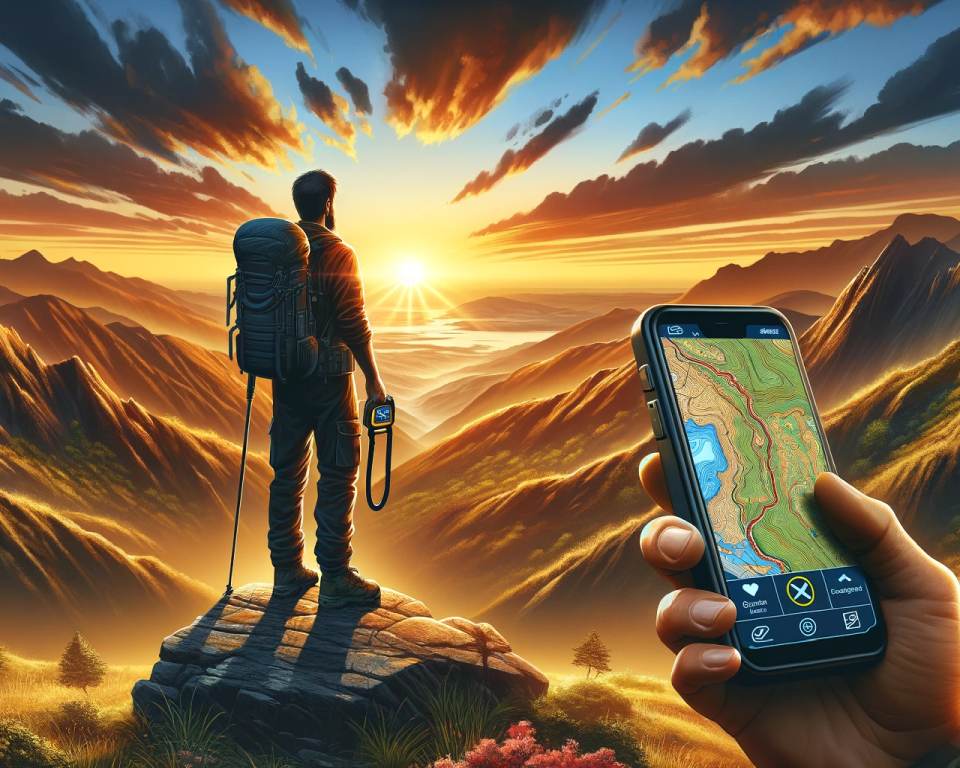
In the next section, we will explore the essential skills of orienteering and wayfinding, providing you with valuable insights into successful wilderness navigation.
Orienteering and Wayfinding
Orienteering and wayfinding are essential skills for survival pathfinding. Whether you’re an avid hiker, a wilderness explorer, or simply someone who enjoys spending time in nature, mastering these outdoor navigation skills can significantly enhance your wilderness hiking and navigation experience.
Enhancing Accuracy and Speed with Orienteering
Orienteering involves using a map and compass to navigate through checkpoints, improving accuracy and speed. By developing proficiency in map reading and compass navigation techniques, you can confidently plot your course and stay on track even in unfamiliar terrain. Orienteering not only helps you reach your destination efficiently, but it also enhances your understanding of the surrounding environment, enabling you to make informed decisions about your route.
When engaging in orienteering, pay close attention to the details on the map, such as contour lines, symbols, and scale. These provide valuable information about the terrain, elevations, and potential obstacles. Familiarize yourself with the compass navigation techniques that allow you to determine your direction accurately and precisely.
One step in the wrong direction can lead to unintended consequences. By practicing orienteering, we gain confidence in our ability to find our way and successfully navigate the wilderness.
Guiding Direction with Wayfinding
Wayfinding is another important skill for wilderness hiking and navigation. Instead of relying solely on maps and compasses, wayfinding involves using natural landmarks and environmental cues to guide your direction of travel. When you develop expertise in wayfinding, you can navigate even without a map and compass, making you more self-reliant in the wilderness.
Take note of distinctive natural features like mountains, rivers, and rock formations, and use them as reference points for maintaining a sense of direction. Pay attention to the position of the sun and its movement throughout the day, as this can also help you establish cardinal directions. Embrace the art of observation and learn to read nature’s signs, such as tracks and animal behaviors, which can lead you to water sources and potential human settlements.
Wayfinding offers a deeper connection with nature by relying on our instincts and the hidden wisdom of the natural world. It fosters a stronger relationship with the environment as we learn to navigate using our senses and intuition.
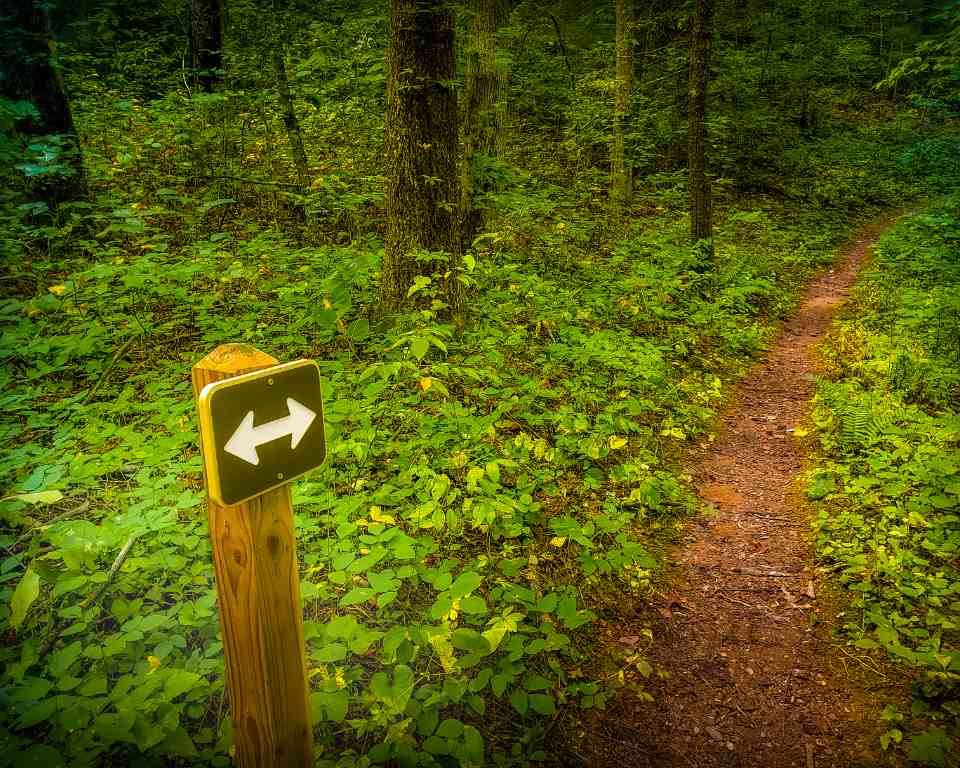
With practice and experience, orienteering and wayfinding become invaluable tools for navigating the wilderness. These skills not only help us reach our destinations efficiently and safely but also provide a sense of adventure and self-reliance. By honing our outdoor navigation skills, we can more fully immerse ourselves in the beauty and wonder of the natural world.
Statistical Insight
Did you know that according to a survey by the Outdoor Industry Association, nearly 46 million Americans participated in wild exploration in 2020? With the increasing popularity of outdoor activities, possessing survival pathfinding skills is more important than ever. Whether you’re an experienced adventurer or a beginner, honing your orienteering essentials in the wilderness is crucial for a safe and enjoyable experience.
The Growing Appeal of Wilderness Exploration
In recent years, there has been a noticeable surge in the number of people venturing into the wild. The allure of unspoiled natural landscapes and the desire for physical challenges have drawn individuals from all walks of life to engage in wilderness exploration. From hikers and campers to nature photographers and wildlife enthusiasts, the call of the wild is impossible to ignore.
“Wilderness is not a luxury, but a necessity of the human spirit.” – Edward Abbey
However, with this increasing enthusiasm for outdoor adventures, it’s essential for individuals to equip themselves with the necessary skills and knowledge to navigate the wilderness effectively. Orienteering in the wilderness requires more than just a sense of adventure; it necessitates careful planning, precise execution, and an understanding of the natural environment.
The Importance of Orienteering Essentials
Orienteering is the art of navigating and finding your way in unfamiliar terrain using maps, compasses, and natural indicators. It encompasses a range of skills, including map reading, compass navigation, and proficiency in using landmarks and natural cues to guide your path.
By mastering orienteering essentials in the wilderness, you gain the ability to navigate confidently through challenging terrains, locate water sources, and find your way back to safety if necessary. These skills empower you to venture deeper into the wilderness, explore less-traveled paths, and truly immerse yourself in the beauty of nature.
Preparedness for the Unexpected
While the allure of the wilderness lies in its untamed and unpredictable nature, it’s crucial to prioritize safety and preparedness. Even the most experienced outdoor enthusiasts can find themselves facing unexpected challenges or getting lost in the vast expanse of the wilderness.
With a strong foundation in orienteering and wilderness navigation, you can mitigate risks, make informed decisions, and increase your chances of survival in emergency situations. Additionally, possessing these essential skills allows you to explore remote areas with confidence, knowing that you have the knowledge and abilities to navigate your way through any obstacles that may arise.
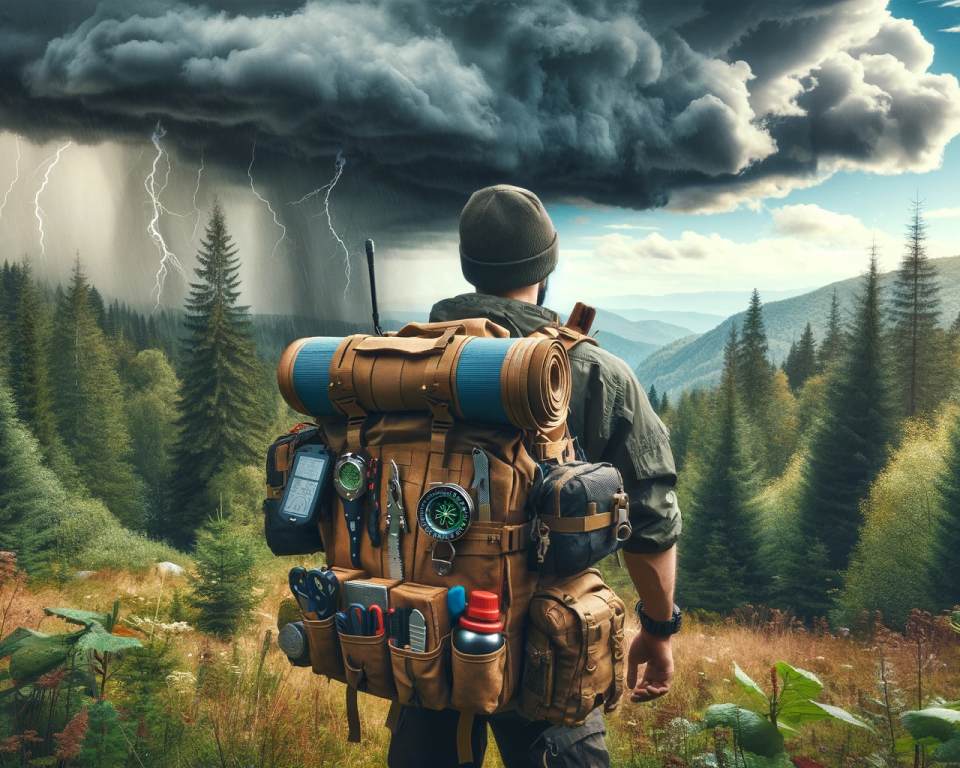
Remember, in the wilderness, your survival depends on your skills and preparedness. Invest time and effort in honing your orienteering essentials in the wilderness, and let your adventurous spirit soar as you explore the captivating wonders of nature.
Wolf College Top 10 Lostproofing Skills
When venturing into the wilderness, it is crucial to prioritize safety and avoid getting lost. As experts in orienteering, Wolf College has compiled a list of the top 10 lostproofing skills that will help you navigate the wilderness with confidence.
Risk management is the first skill on our list. Before embarking on any wilderness adventure, assess the potential risks and plan accordingly. Understanding the terrain, weather conditions, and wildlife behavior will minimize unexpected challenges.
Carrying essential items is another crucial aspect of lostproofing. Always have a well-stocked backpack, including a map, compass, and GPS device. These tools will serve as your navigational aids and provide valuable information about your surroundings.
Informing others about your plans is essential for safety. Let a trusted person know your itinerary, expected return time, and your emergency contact information. This way, if anything goes wrong, help can be sent your way swiftly.
Staying aware of your surroundings is key to successful wilderness navigation. Constantly observe natural landmarks, study the position of the sun or stars, and listen for sounds that might indicate human habitation or water sources. These small cues can make a big difference in finding your way.
By mastering these lostproofing skills from Wolf College, you will be well-prepared and confident in your ability to navigate the wilderness. Remember, orienteering in the wilderness requires essential skills and careful planning to ensure a safe and enjoyable experience.
FAQ
What are wilderness orienteering skills?
Wilderness orienteering skills refer to the techniques and knowledge required to navigate and find one’s way in the wilderness. These skills include map reading, compass navigation, finding natural indicators, and utilizing GPS devices and navigation apps.
Why are orienteering skills important in the wilderness?
Orienteering skills are important in the wilderness because they enable individuals to navigate safely and accurately. By understanding how to read maps, use a compass, and identify natural indicators, adventurers can avoid getting lost and find their way to their destination.
How do I read maps in the wilderness?
Reading maps in the wilderness involves interpreting symbols, contour lines, and scales to understand the terrain, landmarks, and water sources. It is essential to familiarize oneself with the key and legend of a map and practice map reading before heading out into the wilderness.
What is compass navigation and how do I use it in the wilderness?
Compass navigation involves using a compass to determine direction and plot a course. By aligning the compass needle with a specific bearing on the map, adventurers can accurately navigate through the wilderness. It is important to learn how to adjust for declination and take regular compass bearings to stay on track.
What are natural indicators in the wilderness and how can I use them for navigation?
Natural indicators in the wilderness are features or phenomena that can help navigate without a map and compass. Examples include observing the position of the sun to determine cardinal directions, recognizing moss growth on the north side of trees, and studying wildlife behavior to find water sources or human settlements.
What are dead reckoning and pace counting techniques?
Dead reckoning and pace counting techniques are valuable for estimating distances traveled in the wilderness. Dead reckoning involves keeping track of time, direction, and speed to approximate one’s location. Pace counting involves determining the average number of steps required to cover a certain distance, enabling adventurers to track their progress accurately and navigate off the beaten path.
Should I rely solely on GPS devices and navigation apps in the wilderness?
While GPS devices and navigation apps can be valuable tools for wilderness navigation, it is not advisable to rely solely on them. Electronics can fail, run out of battery, or lose satellite connectivity. It is always essential to carry a backup map and compass and have the skills to navigate without technology.
What is the difference between orienteering and wayfinding?
Orienteering involves using a map and compass to navigate through checkpoints, improving accuracy and speed. Wayfinding, on the other hand, relies on natural landmarks to guide the direction of travel. Both skills are necessary for successful wilderness navigation and require practice to develop proficiency.
How many Americans participate in wild exploration?
According to a survey by the Outdoor Industry Association, nearly 46 million Americans participated in wild exploration in 2020. With the increasing popularity of outdoor activities, possessing survival pathfinding skills is more important than ever to ensure safe and enjoyable wilderness experiences.
What are the top 10 lostproofing skills provided by Wolf College?
The top 10 lostproofing skills provided by Wolf College to stay safe and avoid getting lost in the wilderness include risk management, carrying essential items, informing others of your plans, staying aware of your surroundings, and practicing wilderness navigation techniques such as map reading, compass navigation, and orienteering.




